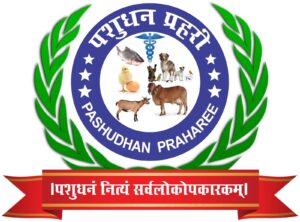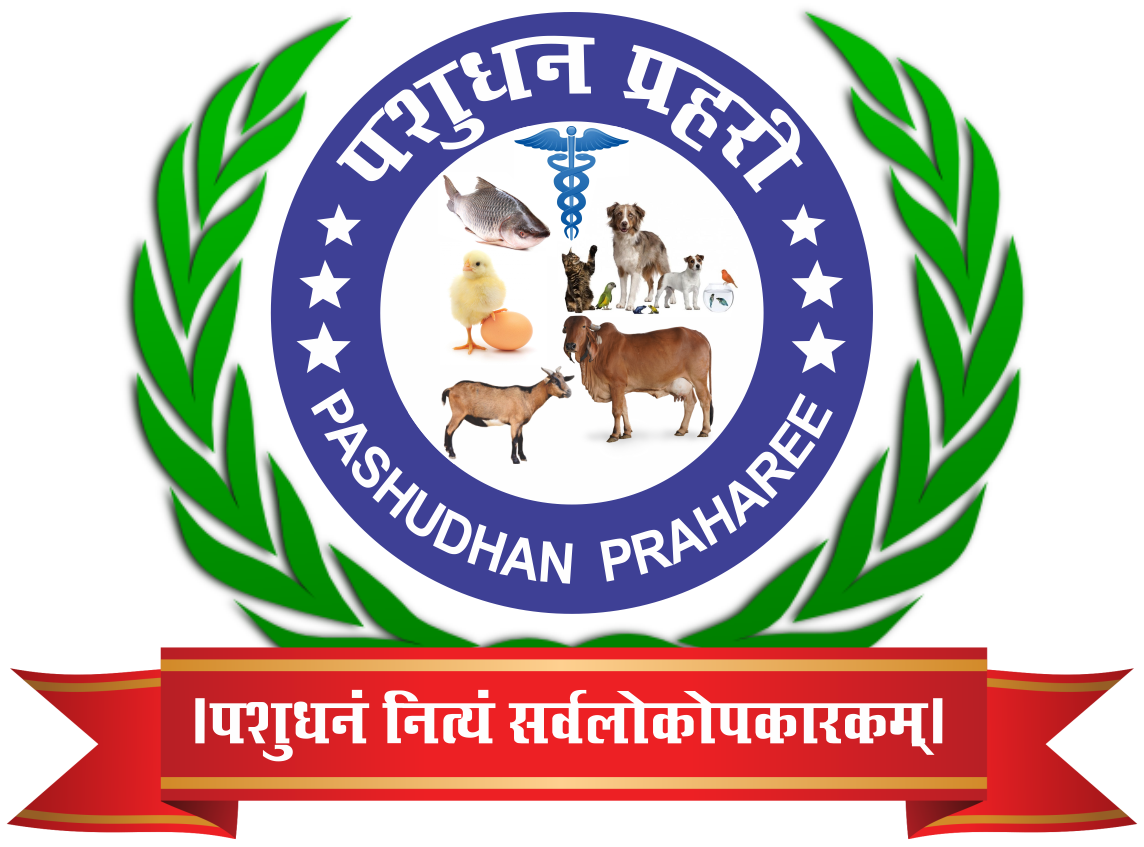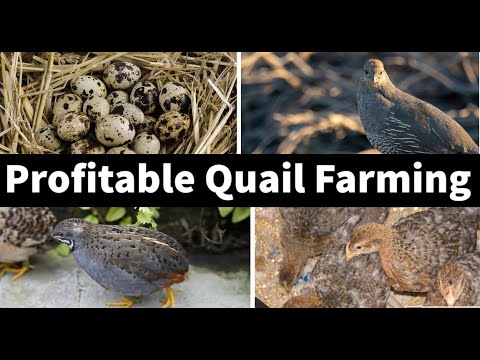Quail Farming: A Profitable and Sustainable Poultry Business
Pallavi bhatambre1., Chamaraj pujar2and Prathviraj3.
Veterinary officer, Gadag., 2PhD Scholar, VCH, Bangaluru and 3Veterinary officer, Raichur.
Introduction
Quail farming is an emerging agribusiness that has gained popularity due to its low investment, quick returns, and high nutritional value of quail products. Quails are small-sized birds that are easy to manage and require minimal space compared to other poultry like chickens and ducks. Quail farming is mainly used for egg and meat production, which are highly nutritious and in demand in both local and international markets.
Selection of Quail Breeds for Farming
Choosing the right quail breed is essential for a successful quail farming business. Different breeds serve different purposes, such as meat production, egg-laying, or ornamental use. Below are some of the most popular quail breeds and their characteristics.
- Japanese Quail (Coturnix japonica)
- Purpose: Dual-purpose (Eggs & Meat)
- Egg Production: High (250–300 eggs per year)
- Maturity: 6–7 weeks
- Size: Small to medium
- Best For: Commercial farming due to fast growth and high egg yield
- Bobwhite Quail (Colinus virginianus)
- Purpose: Meat production & Game bird
- Egg Production: Low (100–200 eggs per year)
- Maturity: 16 weeks
- Size: Medium to large
- Best For: Meat farming and game bird hunting
- Pharaoh Quail (Pharaoh D1)
- Purpose: Primarily egg production
- Egg Production: Very high (300+ eggs per year)
- Maturity: 6 weeks
- Size: Small
- Best For: Commercial egg farming
- Texas A&M Quail
- Purpose: Meat production
- Egg Production: Medium (200–250 eggs per year)
- Maturity: 7–8 weeks
- Size: Large, white-feathered quail
- Best For: White meat production and fast-growing farms
- Button Quail (Chinese Painted Quail)
- Purpose: Ornamental & Pet bird
- Egg Production: Very low
- Maturity: 8–10 weeks
- Size: Very small
- Best For: Hobby farming and pet enthusiasts
Factors to Consider When Selecting a Breed
- Purpose of Farming– Whether you want eggs, meat, or both.
- Growth Rate– Faster-growing breeds are better for commercial farming.
- Egg Production– High-yield breeds like Japanese and Pharaoh quails are ideal for egg production.
- Meat Quality– Texas A&M and Bobwhite quails provide larger meat portions.
- Climate Adaptability– Some breeds are more suited for certain climates.
By selecting the right breed based on your farming goals, you can maximize productivity and profitability in quail farming. Would you like recommendations on housing or feeding next?
Housing Management for Quails
Proper housing is essential for the health, productivity, and safety of quails. Since quails are small and delicate birds, their housing must be well-ventilated, predator-proof, and space-efficient.
- Types of Quail Housing
Deep Litter System
- Suitable for small-scale quail farming.
- Requires 1 sq. ft. per 5 quails.
- Floor covered with dry litter (rice husk, wood shavings, or sand).
- Easy to manage but requires frequent cleaning.
Cage System (Most Common for Commercial Farming)
- Wire mesh cages are stacked in tiers.
- Each cage houses 5–10 quails.
- Size: A cage of 2ft × 2ft × 1ftcan hold about 10 quails.
- Allows easy egg collection, less space usage, and better disease control.
Colony Housing
- A combination of deep litter and cage systems.
- Quails are kept in groups with larger shared spaces.
- Reduces stress and increases social interaction.
- Housing Requirements
| Factor | Requirement |
| Temperature | 20–25°C (Ideal) |
| Humidity | 50–70% |
| Ventilation | Proper airflow without strong drafts |
| Light | 14–16 hours of light for better egg production |
| Space Requirement | 1 sq. ft. per 5 birds (deep litter), 100–150 cm² per bird (cage) |
| Flooring | Wire mesh or soft bedding to prevent injuries |
| Roof | Waterproof and predator-proof |
- Essential Features of Quail Housing
- Predator Protection: Use fine wire mesh to keep out snakes, rats, and cats.
- Good Drainage: Avoid waterlogging; quails are sensitive to damp environments.
- Lighting: Artificial lights can be used to maintain egg production.
- Easy Cleaning: Waste trays under cages help manage droppings and maintain hygiene.
- Management Tips for Better Productivity
- Avoid overcrowding to reduce stress and disease spread.
- Use nipple drinkers to keep water clean and prevent spillage.
- Ensure proper biosecurity to prevent infections.
- Maintain a consistent day-night cycle with artificial lighting.
By following these housing guidelines, you can create a comfortable and efficient environment for quail farming.
Feeding Management of Quail
Proper feeding is essential for the growth, health, and productivity of quails. A balanced diet ensures high egg production, good meat quality, and reduced mortality rates.
- Nutritional Requirements of Quails
Quails need a diet rich in protein, vitamins, minerals, and energy sources. The nutritional requirements vary based on their age and purpose (meat or egg production).
| Nutrient | Starter (0-3 weeks) | Grower (4-6 weeks) | Layer (7+ weeks) |
| Protein (%) | 24-28% | 18-22% | 18-20% |
| Energy (kcal/kg) | 2800-3000 | 2700-2900 | 2600-2800 |
| Calcium (%) | 1% | 1.2% | 2.5-3% |
| Phosphorus (%) | 0.5-0.8% | 0.5-0.8% | 0.5-0.8% |
- Types of Quail Feed
Starter Feed (0-3 Weeks)
- High in protein (24-28%) to promote fast growth.
- Usually given in crumbled or finely ground form for easy consumption.
- Can use commercial broiler starter feedif specific quail feed is unavailable.
Grower Feed (4-6 Weeks)
- Moderate protein (18-22%) to maintain growth.
- Reduces excessive fat accumulation while developing muscle.
- Often given in pellet or mash
Layer Feed (7+ Weeks)
- Rich in calcium (2.5-3%)for strong eggshell formation.
- Protein content of 18-20%to sustain high egg production.
- Can be supplemented with grit, oyster shells, or limestonefor better calcium absorption.
- Feeding Methods
Ad Libitum (Free Feeding)– Feed is always available, and quails eat as needed. This is common for commercial farms.
Restricted Feeding– Fixed feeding times (morning & evening) to control overfeeding and reduce waste.
Wet Mash Feeding– Mixing feed with water for better digestibility (used in some systems but can spoil quickly).
4.Water Management
- Quails need clean, fresh waterat all times.
- Use nipple drinkersor automatic waterers to prevent contamination.
- Electrolytes or vitamins can be added to water during extreme weather conditions or disease outbreaks.
- Supplementation and Special Feeds
- Greens & Vegetables: Spinach, lettuce, or cabbage can be given occasionally.
- Grit & Calcium: Helps digestion and strengthens eggshells.
- Probiotics & Vitamins: Boost immunity and improve gut health.
- Mealworms & Insects: Natural protein sources that enhance feather quality.
- Feeding Schedule & Daily Consumption
| Age Group | Feed Consumption (g/bird/day) | Total Feed Until Maturity (g/bird) |
| 0-3 weeks (Starter) | 7-10 g/day | 250-300 g |
| 4-6 weeks (Grower) | 12-15 g/day | 350-400 g |
| 7+ weeks (Layer/Adult) | 20-25 g/day | Ongoing |
- Common Feeding Mistakes to Avoid
- Using Chicken Feed– Quails require higher protein than chickens, so using regular poultry feed can lead to poor growth.
- Overfeeding– Can cause obesity, reduced egg-laying, and health issues.
- Dirty or Stale Feed– Leads to infections and lower productivity.
- Calcium Deficiency– Results in weak eggshells and lower hatchability.
Breeding and Reproduction in Quails
Breeding is a crucial aspect of quail farming, ensuring a steady supply of productive birds for egg and meat production. Successful breeding requires proper pair selection, mating management, and ideal environmental conditions.
- Selecting Breeding Stock
For high productivity, healthy and genetically superior quails should be chosen based on the following factors:
- Age: Best breeding age is 7–8 weeksfor females and 8–10 weeks for males.
- Body Weight: Males should weigh at least 150g, and females 180gfor good fertility.
- Egg Production History: Select females with consistent egg-laying performance.
- Health Status: Birds should be disease-free, active, and have no deformities.
- Mating Ratio & Methods
Quails do not need nesting boxes for mating. The right male-to-female ratio is essential for optimal fertility:
| Mating Ratio | Purpose | Effectiveness |
| 1 Male: 2-3 Females | Maximum fertility | High hatch rate |
| 1 Male: 4-5 Females | Commercial breeding | Good fertility |
| 1 Male: 6+ Females | Large-scale farming | Lower fertility |
Mating Methods:
- Natural Mating– Males and females are kept together in colony cages.
- Artificial Insemination (AI)– Used in scientific breeding programs to improve genetic traits.
- Egg Collection & Incubation
Quails lay 5–6 eggs per week, usually in the evening. These eggs must be collected regularly and stored properly before incubation.
Natural Incubation
- Quails do not brood naturally, so farmers must use incubatorsor foster hens.
- If using natural brooding (rare), smaller breeds like Bantam henscan be used as surrogate mothers.
Artificial Incubation
| Factor | Requirement |
| Temperature | 37.5°C (99.5°F) |
| Humidity | 60–70% |
| Turning Eggs | 3-4 times a day |
| Incubation Period | 16–18 days |
| Hatch Rate | 75–85% (under ideal conditions) |
Fertile eggs should be stored at 15°C for no more than 7 days before incubation.
- Hatching & Chick Management
Once quail chicks hatch, they require special care for survival.
Brooder Setup (0–3 Weeks)
- Temperature: 35°C (95°F)in the first week, reducing by 3°C each week.
- Brooding Space: 50 chicks per 1 sq. ft.
- Heat Source: Infrared bulbs or heating pads.
- Feed: Starter feed (24–28% protein) is essential.
- Water: Fresh, clean water with electrolytes for hydration.
Common Chick Problems & Solutions
| Problem | Cause | Solution |
| Low Hatch Rate | Poor egg storage, incorrect incubation | Ensure correct temperature & humidity |
| Weak Chicks | Malnutrition in parent stock | Feed high-protein breeder diet |
| High Mortality | Cold stress, dehydration | Maintain proper brooding temperature |
- Factors Affecting Fertility & Hatchability
- Age of Birds: Fertility declines after 6 monthsin quails.
- Genetics: Selective breeding improves productivity.
- Lighting: 14–16 hours of lightdaily improve mating behaviour and egg-laying.
- Stress: Overcrowding and loud noises can reduce mating activity.
Applications in the Field
Quail farming has various applications, including:
- Commercial Meat Production– Quail meat is lean, rich in protein, and a healthier alternative to other poultry meats.
- Egg Production– Quail eggs are in high demand due to their medicinal benefits and superior nutritional profile.
- Breeding Programs– Quail farming can be used to improve genetic strains for better productivity.
- Research and Education– Universities and agricultural institutions use quails for research on genetics, nutrition, and disease control.
- Pet and Game Bird Farming– Some people rear quails as exotic pets or for game bird hunting.
Benefits of Quail Farming
- Low Maintenance and Investment– Requires minimal space, feed, and infrastructure compared to chicken farming.
- Quick Maturity and Productivity– Quails start laying eggs within 6–8 weeks, ensuring a fast return on investment.
- Highly Nutritious Products– Quail eggs are rich in vitamins, minerals, and antioxidants, often recommended for people with allergies or weak immunity.
- Disease Resistance– Quails are hardy birds with better resistance to diseases than chickens, reducing medical expenses.
- High Market Demand– Quail eggs and meat are in demand due to their unique taste and health benefits.
- Eco-Friendly Farming– Produces less waste, and their droppings serve as organic fertilizer.
Disadvantages of Quail Farming
- Delicate Handling Required– Quails are small, fragile birds that require careful management.
- Limited Market Awareness– Many people are unaware of quail meat and eggs, leading to a smaller consumer base.
- High Mortality Rate in Chicks– Young quail chicks are sensitive to temperature changes and need special care.
- Regulatory Restrictions– Some countries have legal restrictions on quail farming due to conservation concerns.
- Lower Meat Yield– Compared to chickens, quails provide smaller portions of meat per bird.
Conclusion
Quail farming has emerged as a compelling alternative within the poultry industry, offering a range of benefits that cater to both small-scale farmers and large commercial operations. The compact size of quails allows for efficient use of space, making them suitable for urban homesteading and areas with limited land availability. Their rapid growth and early sexual maturity mean that quails can begin laying eggs as early as six weeks of age, leading to quicker returns on investment. Additionally, quail meat and eggs are rich in high-quality protein, vitamins, and minerals, contributing to improved nutritional security.
Despite these advantages, the expansion of quail farming faces certain challenges. Market awareness remains limited in some regions, with consumers less familiar with quail products compared to traditional poultry. This lack of awareness can impact demand and profitability. Furthermore, regulatory frameworks for quail farming are not as well-established as those for other poultry sectors, potentially leading to uncertainties for farmers regarding compliance and standards.
Addressing these challenges requires targeted efforts to educate consumers about the benefits of quail products and to develop clear regulatory guidelines that support the growth of the industry. By overcoming these hurdles, quail farming holds significant potential to diversify poultry production, enhance sustainable protein sources, and contribute meaningfully to global food security.
In conclusion, with strategic management and supportive policies, quail farming can become a vital component of sustainable agriculture, offering economic opportunities for farmers and nutritious options for consumers.



